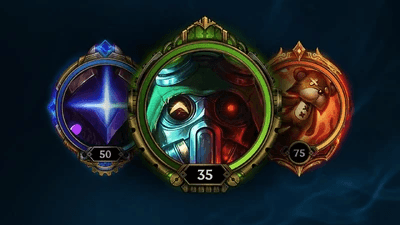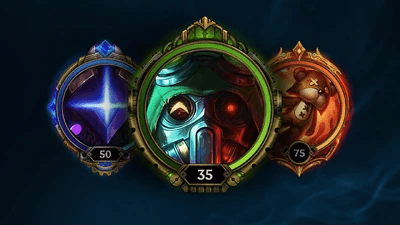


In the online gaming world, League of Legends stands out due to its complexity and popularity. Players across the globe invest an incredible amount of time understanding its mechanics and keeping up with its meta. While many resources discuss advanced tactics and summoner setups, few are designed for the absolute beginner. This guide fills that gap. It's not just about general advice; it's a detailed roadmap for introducing new players to the game.
Whether you're a seasoned player aiming to guide a friend or wanting to become a coach specializing in training newcomers, this guide provides a structured approach to teaching someone League of Legends from the basics.
Starting with the LoL client, a new player is greeted with many options. There's the Play button leading to various game modes, the Collection tab showcasing an array of champions, and the Store filled with skins, champions, and more. This, combined with the game's jargon, can be daunting.
But have you ever considered why some players stick around, push through the initial confusion, and want to learn more, while others quit prematurely? It's often tied to their initial experiences and the guidance (or lack thereof) they receive. How can we make this initiation smoother?
Every champion unlocked, every strategy learned, and every game played adds to a player's passion for LoL. As coaches and mentors, it's our duty to fan these initial sparks of interest into roaring flames of enthusiasm. The beginning might be rocky, but the potential for growth and love for the game is immense.
Start by simplifying. Instead of introducing all game modes simultaneously, begin with ARAM or Co-op vs. AI. These modes provide a less intimidating environment, allowing beginners to get a feel for champions and basic mechanics.
Before diving into the mechanics, one needs to set the right environment for learning. Just like how a classroom is designed for optimal student engagement, your initial LoL sessions should be tailored for maximal comfort and minimal distractions.
Recall any skill you tried to learn. Perhaps a musical instrument, a new language, or even a sport. The surroundings, the tools, and the mentor's approach played a crucial role in how quickly and efficiently you learned, didn't they? The same principles apply here.
If a student is passionate about diving deep into the game, their equipment doesn't have to be high-end, but the commitment to learn and grow is indispensable.
Ensure the player has a stable internet connection, comfortable headphones, and a system that meets the game's requirements. Introduce them to the in-game settings—adjusting graphic settings for smooth gameplay, setting key binds, and familiarizing them with the ping system for effective communication.
LoL is replete with its own vocabulary. Terms like "cc", "gank", "freeze", "push lane", and "kiting" might seem alien to a novice. As fundamental as they are, it's essential to introduce them gradually, contextualizing each within the game's flow.
Think back to when you learned to cycle. Before mastering the art of balancing, you had to understand the components—the pedals, the brakes, the handle. In LoL, the terminologies are the components. How can one strategize without understanding the basic terms?
The beauty of LoL's vocabulary is that it paints a vivid picture of the game's dynamics. There's a certain thrill in calling out a successful "gank" or strategizing a "split-push". These terms are not just words but the essence of the game's strategic depth.
Start with the map—introduce the three lanes in the Summoner's Rift (Top, Mid, and Bot lane), the jungle, and key objectives like turrets, dragons, and Baron Nashor. Progress to explaining gold and experience system and buying items of attack damage, ability power, armor, magic resist, etc. As the beginner plays, weave in terms relevant to their champion and role, ensuring they grasp both the word and its application.
To help beginners decide what role to play and know how to play them, you can refer to our guide to choosing the right role. Champ selection is no easier than role pick. With over 160 champions, each boasting unique abilities and playstyles, the choices can be overwhelming. However, there's a method to this madness. Certain champions are more forgiving for beginners, allowing them to grasp core mechanics without being overly complex.
In LoL, every champion has a story, a playstyle, and a role. What if the key to effective learning lies in mechanics and finding a champion that resonates with the player?
Discovering a champion that aligns with a player's personality and playstyle can make the journey more immersive and enjoyable.
Introduce champions based on roles. For beginners, champions like Garen (Top), Annie (Mid), Ashe (ADC), Soraka (Support), and Warwick (Jungle) are often recommended. They possess straightforward mechanics, allowing novices to focus on game basics and gaining an initial understanding of summoner spells, runes, etc. However, always encourage them to explore and find the one that truly clicks.
Now that a champion has been chosen, it's vital to understand core gameplay mechanics. From farming minion waves (or "cs" and "last hit") to controlling vision with wards, there are foundational aspects that every League of Legends player should master.
Imagine playing a new musical instrument. How does one transition from random notes to a harmonious tune? Similarly, how can a new League of Legends player orchestrate their movements, decisions, and timings to achieve in-game harmony?
Every minion kill, ward placed, and decision to engage or retreat aren't just game mechanics; they're the heartbeats of a LoL match. And with time, these beats can sync up to create a symphony of strategic gameplay.
Emphasize the importance of objectives like turrets, dragons, and inhibitors. Teach them about the significance of map awareness, the value of vision, the art of positioning in team fights, and the synergies between laners and junglers. Every element, when combined, creates a broader game strategy.
Like any competitive game, League of Legends comes with its challenges. Facing smurfs, dealing with toxic teammates, or even hitting a losing streak can be discouraging.
Life often presents us with setbacks. How we navigate them defines our journey. Similarly, challenges are inevitable in the rift, but they also make victories sweet and growth evident.
Embrace challenges as part and parcel of the LoL experience. Every hurdle is a good way to learn, an opportunity for growth, and a lesson in patience, strategy, or teamwork.
Provide tools and tactics to cope. Whether using the mute function, seeking feedback post-game, taking breaks after consecutive losses, or using League apps to help, it's about building resilience and a growth mindset.
Players' journey in LoL is often full of mistakes. Missed skill shots, over-extensions, failed smite attempts - they're all part of the learning curve. The key, however, is not in avoiding mistakes but in learning from them.
Every error is an opportunity in disguise. A missed ult today can become a game-winning play tomorrow, provided the player understands what went wrong. Isn't it fascinating how failures, when approached correctly, pave the way for future successes?
Every League coach, even the best has tales of blunders turned lessons. The passion for the game isn't just about celebrating victories but cherishing the journey, bumps and all. It's about the relentless pursuit of growth, game after game.
Your feedback is invaluable as a coach. Focus on constructive criticism. Instead of pointing out mistakes in isolation, discuss the broader context, potential outcomes, and alternate strategies. Encourage the beginner to self-analyze, too, fostering a mindset of continuous improvement.
LoL is dynamic. With regular patches, champion reworks, and meta shifts, what's relevant today might not be tomorrow. Consider LoL as a vast, ever-evolving universe. How does one stay updated, ensuring they remain caught up in this cosmic dance of changes?
There's an inherent thrill in adapting, discovering new strategies, and evolving with the game. It's not just about playing League; it's about growing alongside LoL.
Recommend patch note reviews, following pro players, and engaging in forums or communities for discussions. Encourage them to be proactive learners, constantly seeking to enhance their gameplay.
League of Legends isn't just a game but a journey and an experience. From selecting the right champion to navigating challenges and continuously learning, it presents players with numerous growth opportunities, both in-game and personally. Incorporating this guide into your teaching strategies will teach your students the best way to learn the basics. Whether you're a coach, a seasoned player, or a beginner, there's always something new to discover, strategies to master, and stories to share. Embrace the game, engage with its community, and let's keep the spirit of the rift alive!